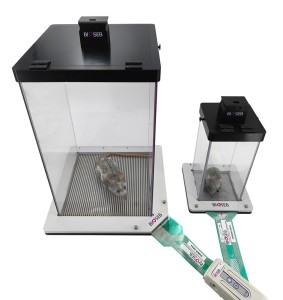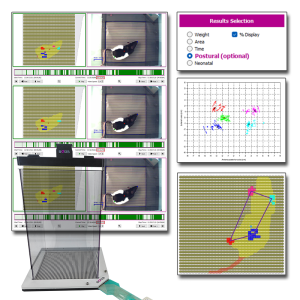Authors
D Kishnan, E Orozco, L Nair
Lab
Department of Biomedical Engineering, University of Connecticut, USA
Journal
The Journal of Pain
Abstract
Osteoarthritis (OA) is highly prevalent across the world with 30% of the US population who are 45 and older estimated to have knee osteoarthritis. The primary clinical indication of OA is pain. Mono-iodo acetate (MIA) induced osteoarthritis is commonly used to study pain in pre-clinical models. Currently mechanical allodynia and thermal hyperalgesia are used to measure the pain outcomes in most pre-clinical models however, the non-evoked dynamic weight bearing analysis provides more clinically relevant behavioral assessment of pain. The goal of the study is to comprehensively understand the changes in dynamic weight bearing behavior of rats with MIA induced OA over a period of 16 weeks. Osteoarthritis was induced in female Sprague-Dawley rats by C-arm guided injections of MIA (3 mg) into the intra-articular region of the right knee. Non-evoked dynamic weight bearing was evaluated using a pressure sensor system (Bioseb DWB 2.0), mechanical allodynia using Von Frey filaments, and transcriptional changes at the dorsal root ganglion using BioRad gene array. MIA model showed mechanical allodynia of the ipsilateral paw for over 3 months. The dynamic weight bearing parameters reveal continuous compensatory weight preference towards the uninjured limbs for the same period. Unlike Von Frey, significantly different dynamic behavioral parameters begin to appear within 24 hours post MIA injection. Moreover, parameters related to weight and area distribution showed temporal changes over the course of the study. The study shows that dynamic weight bearing assessment is an effective tool to understand the long-term progression of pain behavior in a MIA model.
BIOSEB Instruments Used
Dynamic Weight Bearing 2.0 (BIO-DWB-DUAL)
Source :

 Pain - Thermal Allodynia / Hyperalgesia
Pain - Thermal Allodynia / Hyperalgesia Pain - Spontaneous Pain - Postural Deficit
Pain - Spontaneous Pain - Postural Deficit Pain - Mechanical Allodynia / Hyperalgesia
Pain - Mechanical Allodynia / Hyperalgesia Learning/Memory - Attention - Addiction
Learning/Memory - Attention - Addiction Physiology & Respiratory Research
Physiology & Respiratory Research











![Dynamic Weight Bearing 2.0 – Postural Module [Add-on]](https://bioseb.com/733-home_default/dynamic-weight-bearing-20-add-on-postural-module.jpg)
























 Pain
Pain Central Nervous System (CNS)
Central Nervous System (CNS) Neurodegeneration
Neurodegeneration Sensory system
Sensory system Motor control
Motor control Mood Disorders
Mood Disorders Other disorders
Other disorders Muscular system
Muscular system Joints
Joints Metabolism
Metabolism Cross-disciplinary subjects
Cross-disciplinary subjects CONFERENCES & MEETINGS
CONFERENCES & MEETINGS 
